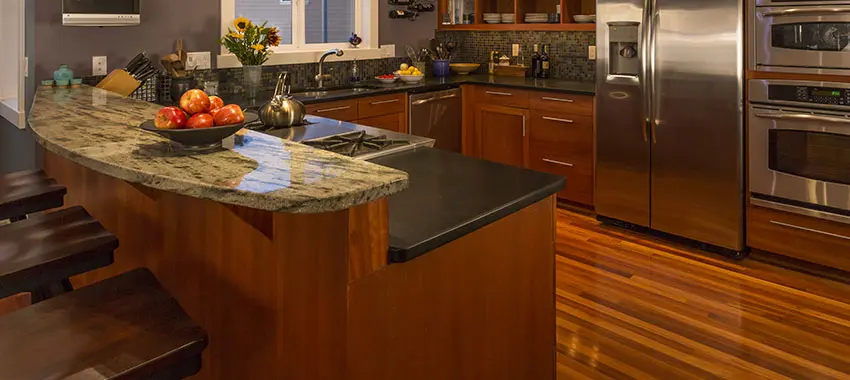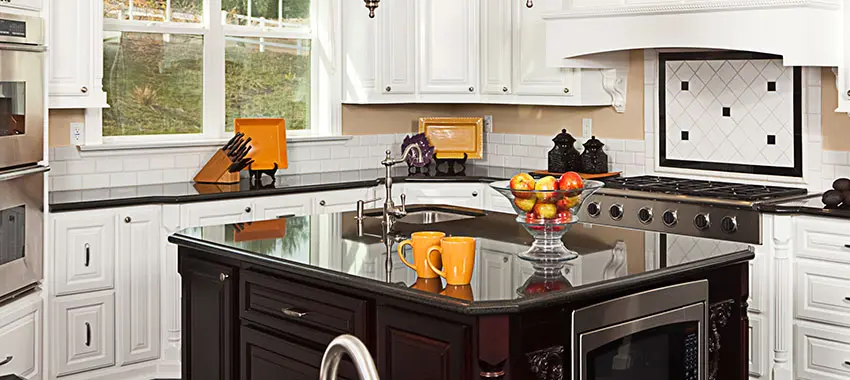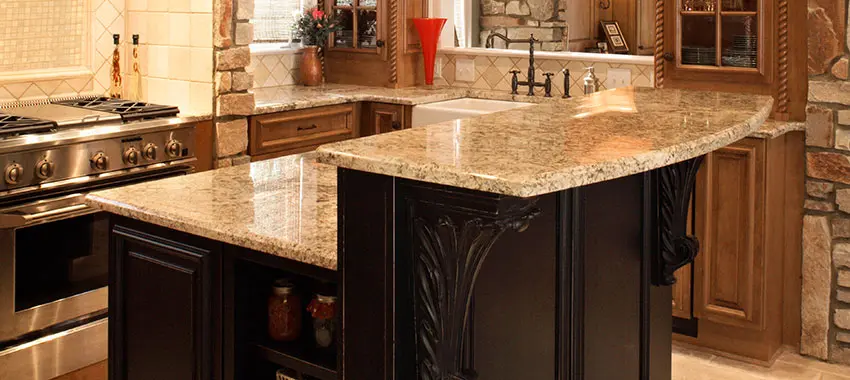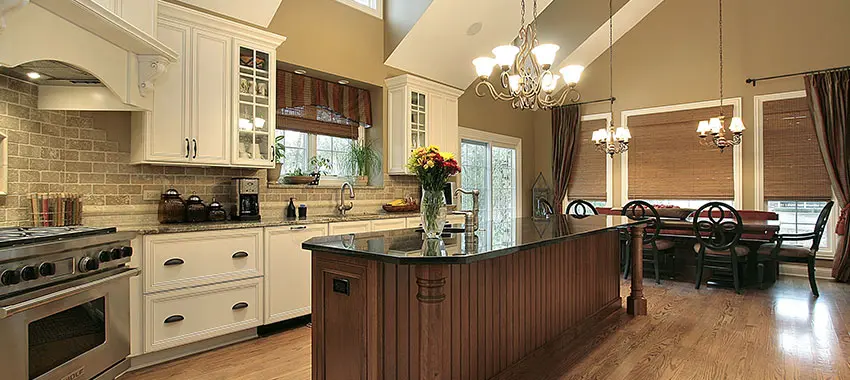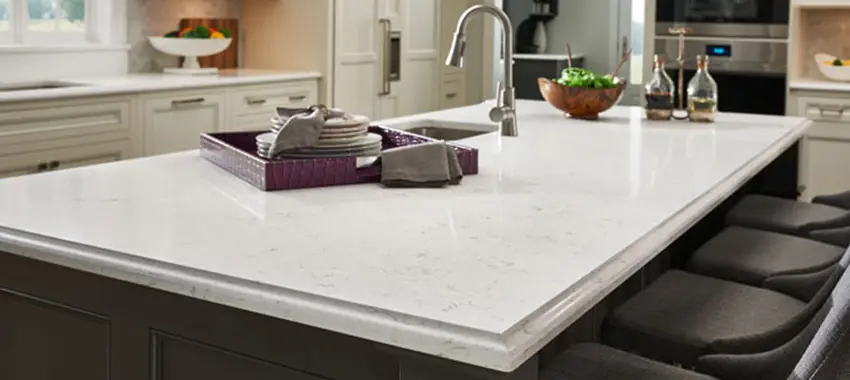Oct
Is It Better To Have Dark Or Light Granite Countertops?
- 2024
- FlintStoneTops
Choosing a countertop material is hard enough, but what about the colors? It is way harder than choosing the material. So, before you go to a granite contractor, here is a guide that will draw a comparison between light and dark granite countertops.
Light Vs. Dark Granite Countertops
Availability
You need to know about the availability of the colors in granite. Sure, granite is available in a lot of colors, but the availability matters the most. If you can’t get your hands on a countertop color, then what’s the point if it’s famous or amazing to look at?
Light Granite Countertops
Light granite countertops are a bit harder to find. They are not as readily available as other colors when it comes to granite, so if you like light colors, then you might need to look around for a bit to find the color your heart desires.
The retailers that carry light granite countertops are few and far between, but they are available if you know where to look and find them.
Dark Granite Countertops
Dark granite countertops are available in abundance. Naturally, granite is a dark stone, usually dark gray or black with a mosaic of specks and glitter on the surface, so it is not that hard to find dark granite countertops.
If you love dark granite countertops, then you have a ton of options to choose from, and to be honest, the signature color of granite is dark, so it’s more popular.
Durability
The durability and color of granite countertops are also related, which might sound weird but it helps in figuring out which countertop is the best for you at the end of the day.
Light Granite Countertops
Light granite countertops are less dense than any other color of granite. The packing of the material and the overall resistance to scratches, heat, and other things is not as remarkable in light granite countertops.
So, light granite, even though it is granite and it is durable and strong, will not last as long as other colors. This is something that you should keep in mind when you’re out selecting a granite color.
Dark Granite Countertops
In dark granite countertops, the density is higher than its light counterparts, so you will be happy to know that this colored countertop has great resistance to scratches, heat and even chipping.
The density of dark granite is high, because it’s formed at higher pressure and temperatures, and the material is densely packed thanks to the mountain of forces applied on the rock, during its formation. So, if you’re looking for a material that will last a lot longer, then you need to go for dark granite countertops.
Maintenance
The next order of importance is the maintenance of the granite countertops. This is something that a lot of people can forget at times, but every color has certain aspects of maintaining it and you need to know about them.
Light Granite Countertops
Light granite countertops are a bit harder to maintain, as you may have already guessed it. Think about it – you’ve heard it a lot. Light colors are always hard to clean and this fact applies smack in this scenario. Yes, light granite countertops are very hard to clean and stains and splotches will show on them very easily.
So, you need to keep this crucial fact in mind if you want to go for light granite countertops because it can change the course of how you maintain and take care of things.
Dark Granite Countertops
Dark granite countertops are a lot easier to maintain, especially compared to light granite countertops. This doesn’t mean that they’re the best though, because if you didn’t know this already, dark granite countertops can hide stains, but they will make dirt and debris stand out like nothing else.
The lighter layer of dust and dirt will be visible on top of the dark granite surface, so you won’t get a free pass on getting away with not cleaning the countertops.
Cleaning
The fact is already established that light granite countertops are hard to maintain, but what about how they look before you clean them? Well, that’s no surprise either.
Light Granite Countertops
Light granite countertops don’t make any effort to hide the stains and spills on its surface unless it’s clear water. Any food or fruit stain on the light and stark granite countertops will show prominently and you have no choice but to clean it up right away.
If you let the spill sit for too long then things can take a turn for the worse and the countertops can get stained. That is not what you want.
Dark Granite Countertops
These can get away with not being wiped down for a day or two, but you don’t want to make it a habit, because whatever it is, you are using the countertops to prepare food and the surfaces should be sanitary.
Therefore, it’s not wise to not clean the countertops after every night when you’re done for the day. That’s not how things work and you need to make it a habit to always clean the countertops, no matter what color they are.
Versatility
Now comes another very important bit of information and that is to understand the versatility of each color that goes with the rest of the kitchen décor.
Light Granite Countertops
Light granite countertops are amazing in the sense that they don’t need to be matched with everything else. The light color goes with almost every décor.
Whether your kitchen is dark or minimal, clustered with colors or plain, the light granite countertops will add a touch of softness and fit right into the rest of the décor like a puzzle piece meant for the place. So, if you’re worried that light granite countertops won’t go with your kitchen décor, then think again.
Dark Granite Countertops
The of dark granite countertops color is a bit loud and for some people, the countertops can look a bit harsh, especially if you’re going for a dark-on-dark theme.
A balance of sorts needs to be established when you’re pairing dark granite countertops with the rest of your kitchen décor. It will only make the kitchen look good in the end. So, put on your creative hats, because you’ll need them.
Price
The price of granite and the color of the countertops you go for matters too.
Light Granite Countertops
Light granite countertops can be a bit on the expensive side of things because firstly it’s granite and secondly, it’s not as commonly available as other granite colors so you might find yourself in a bit of a pinch if you don’t already know this fact.
Dark Granite Countertops
They are a bit more common in availability, so they’re not as expensive as light granite, but let’s face it: It’s granite you’re concerned with and it’s generally an expensive material, so it might not always be affordable.
Conclusion
Granite is available in a wide variety of colors, but they’re mostly classified into light and dark. So, now you know what colors of granite countertops are not only beautiful but also functional. If you want to check out different granite colors and patterns, get in touch with granite countertop installers Rockville.


